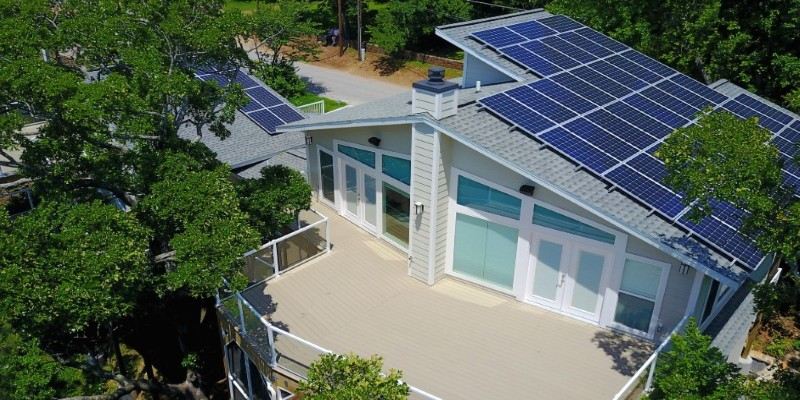Buying a home isn’t as straightforward as it looks on paper. Loans come in all shapes and sizes, and unless you’re reading the fine print, you might miss the one that fits best. One of those lesser-known but sometimes incredibly useful options is a VA ARM — short for VA Adjustable-Rate Mortgage. If you’re a veteran or an active service member, you’ve probably heard about standard VA loans.
But VA ARMs? That’s a slightly different beast. They offer the benefits of VA loans but with a different rhythm when it comes to interest rates. Let’s unpack what that actually means and whether it's something to consider seriously or skip altogether.
Understanding VA ARMs: What Makes Them Different
A VA ARM is a type of mortgage loan backed by the U.S. Department of Veterans Affairs, designed specifically for eligible veterans, active-duty military personnel, and certain military spouses. Unlike a fixed-rate VA loan, where your interest rate remains the same throughout the life of the loan, an adjustable-rate mortgage (ARM) starts with a fixed interest rate for a limited time and then shifts into a variable-rate phase. This means that after a certain number of years (often 1, 3, 5, 7, or 10), your rate can adjust annually based on the market.
The starting rate for a VA ARM is typically lower than the rate on a 30-year fixed VA loan. This initial low rate is what draws a lot of interest, especially from borrowers who know they won’t be in the home long-term. It gives them a break on interest in the early years, potentially saving thousands. However, that flexibility comes with a tradeoff: once the adjustment period begins, the interest rate — and, therefore, your monthly payment — could go up. Or down. Or stay the same. It depends on the market and how your loan is structured.
VA ARMs are still government-backed, which is an important distinction. The VA guarantees a portion of the loan, which can make lenders more comfortable and allow borrowers to avoid private mortgage insurance (PMI). They also have limits on how much the interest rate can jump in a given year and over the life of the loan. That cap provides some peace of mind, but it's no substitute for understanding how the adjustments work.
Who Should Consider a VA ARM?
Let’s get one thing straight: VA ARMs are not for everyone. They have a very specific use case, and understanding when to use them is critical. Generally, they’re a good fit for military members who move frequently. If you’re stationed in a city for three to five years and know you’ll be selling or refinancing before the adjustable period kicks in, then locking in a lower rate at the start could be a smart move.

Think of it as renting money cheaply while you need it. You get the benefit of lower interest in the first few years, and by the time the rate starts to shift, you’re already packing boxes. It’s a calculated risk, and in this case, it’s a risk you’re not actually taking — because you’ve planned your exit.
Another group that might consider a VA ARM is financially savvy buyers who expect market interest rates to stay the same or drop in the coming years. If they believe the rate won't spike, they can ride the low-cost wave for a while. But this is a gamble, and it requires an understanding of how rate indexes work — and a stomach for risk if those assumptions prove wrong.
VA ARMs can also be appealing to borrowers looking to qualify for a higher loan amount. Lower initial payments might help them meet debt-to-income requirements for a bigger mortgage. That might be useful in high-cost housing markets where affordability is an issue — but again, it only works if the homeowner can handle potentially rising payments later on.
Risks and Realities: What You Need to Know Before You Sign?
Here's the reality of VA ARMs: they're cheaper up front, but the long game is less predictable. The interest rate adjustments are usually tied to a specific index, like the 1-Year Treasury index or the Constant Maturity Treasury (CMT) rate, and each year, your rate could increase depending on how that index moves.

To prevent sticker shock, VA ARMs come with "caps" — limits on how much the interest rate can go up each year and over the life of the loan. For example, your rate might not be able to rise more than 1% per year and no more than 5% above your starting rate in total. So, if you start at 3%, the highest your rate could ever go might be 8%, depending on your loan terms. That's protection, sure, but it's still a jump that could make a big difference in your monthly payment.
Payment shock is a real thing. If you’re not prepared, or if your income doesn’t rise along with your rate, you could quickly go from comfortably affording your mortgage to barely scraping by. Even though VA loans don’t require PMI, the increase in monthly payments could still stretch a tight budget.
Another issue is refinancing. If interest rates rise across the board, refinancing to a fixed-rate loan later might not save you any money — it could even cost more. That's why the VA ARM is best suited for use with a clear timeline and a flexible financial situation.
Conclusion
VA ARMs can work well if you're clear about your short-term plans and willing to take on some risk. They’re not scams or bad loans—they just aren’t right for everyone. If you're planning to move, change jobs, or grow your family within a few years, the lower starting rate might help. But if you're unsure, a fixed-rate loan may offer more peace of mind. The key is looking ahead—not just at today’s numbers, but at where you’ll be in a few years. The right loan fits your life, not just your budget. Know your goals before you choose.












